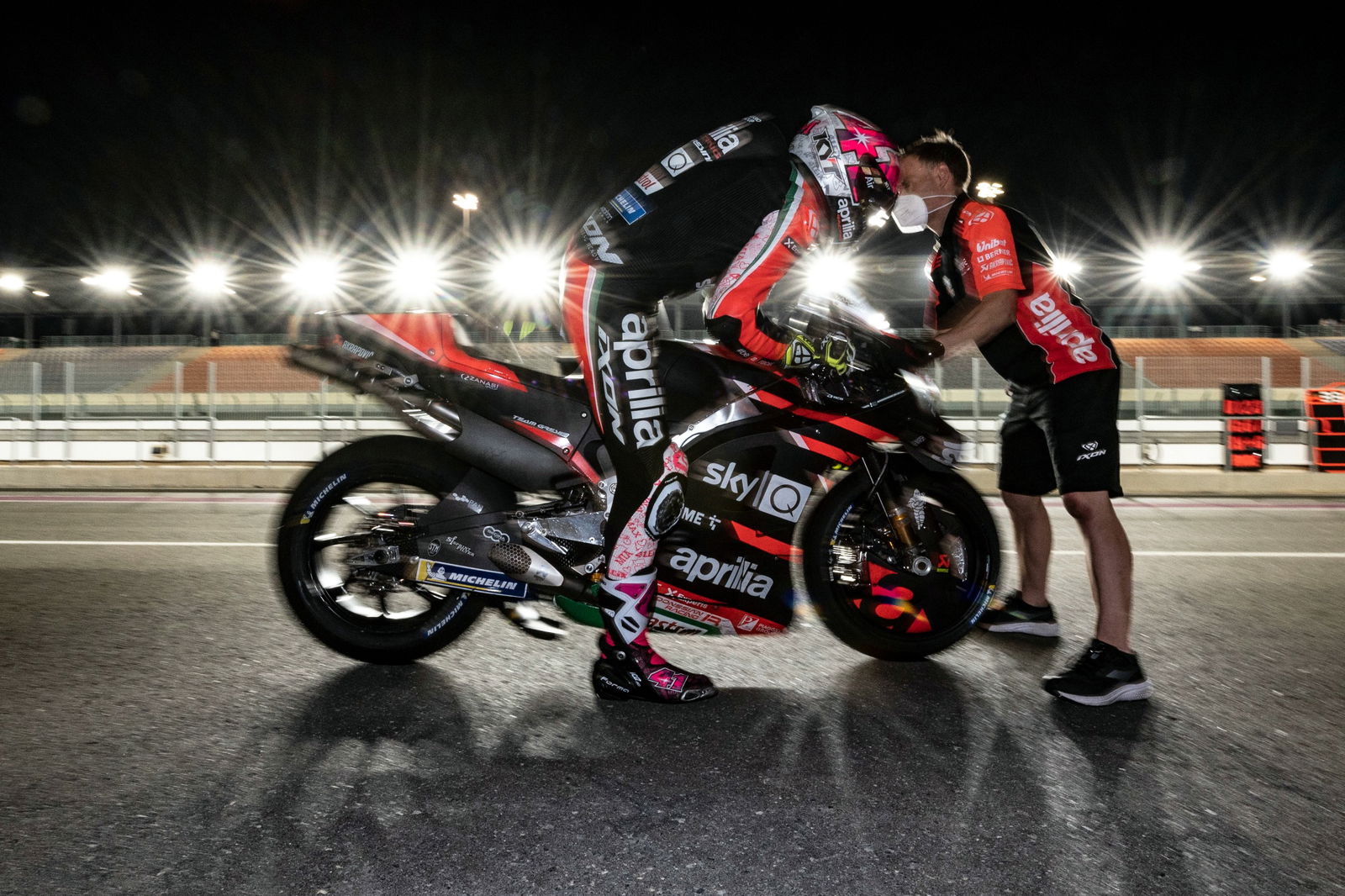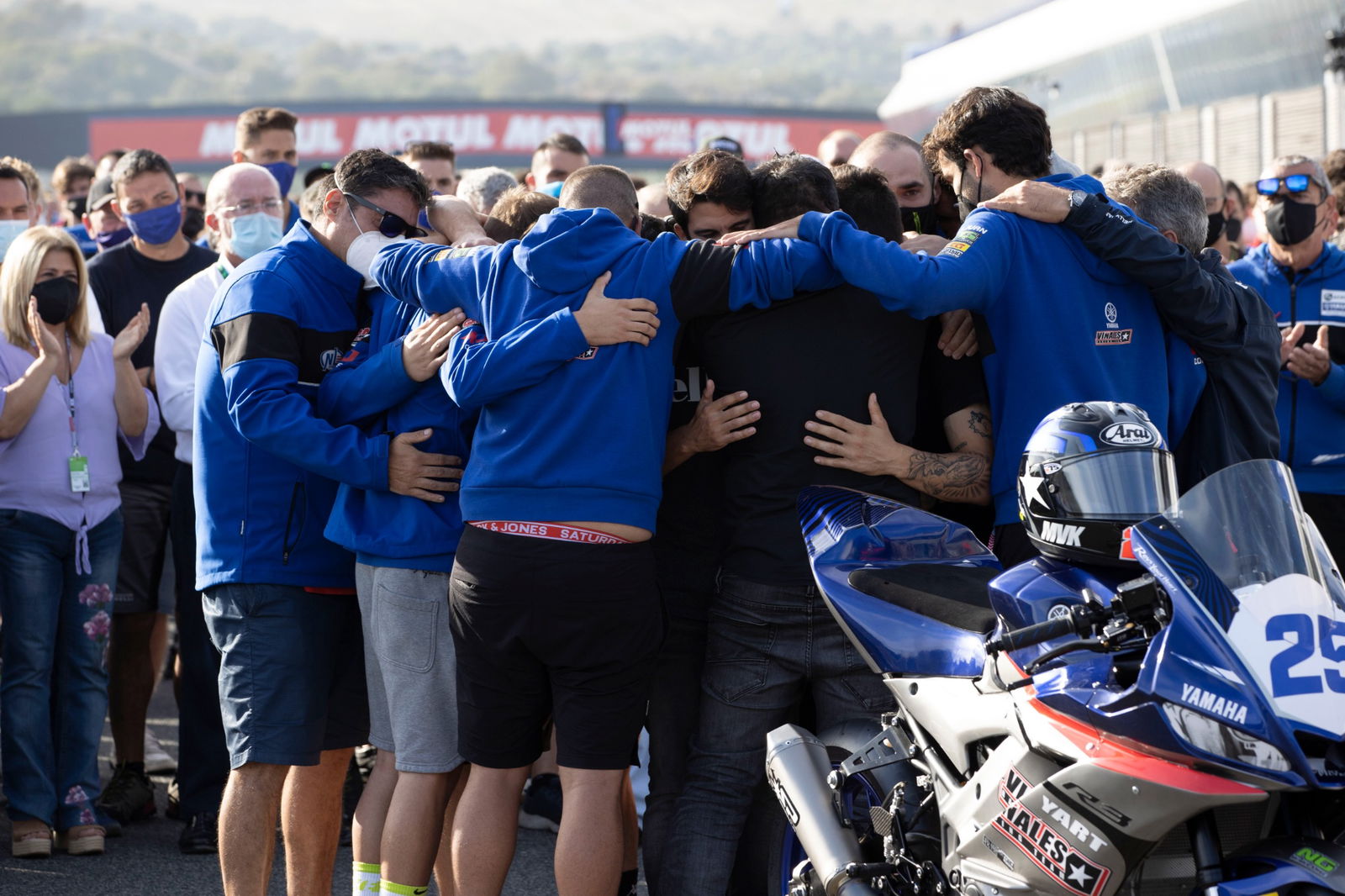'This can't continue, big list of ideas' - MotoGP stars react to latest tragedy

Racing motorcycles is inherently dangerous but after three teenage deaths in four months - Hugo Millan (14), Jason Dupasquier (19) and now Dean Berta Vinales (15) - MotoGP riders agreed action must be taken to address the string of fatal injuries for Moto3/SSP300 riders falling in front of other competitors.
"It's beyond terrible, it's atrocious what's happened this year with so many young lives being lost," said Ducati's Jack Miller.
"Looking the other day at Dean, [born in] 2006. It's not long ago. The poor kid didn't get to live a full life, and that's terrible. And I know one of the young Australians that's living up in Andorra was involved in the accident, Harry Khouri, and he's pretty torn up about it. It affects these young kids for sure.
"But unless we're going to stop young kids from racing - which I don't think is the right way to go about it, because at the end of the day that's what they love, they know that these risks are there - there's not much you can do except try to make the racing safer."
Miller added: "There has to be I think a big step taken in looking at the safety, at the way these races go. This year's been especially bad, but this can't continue. We can't have three young kids in the space of not even nine months losing their lives. It's atrocious.
"I think I speak on behalf of everybody when I say I'm getting sick and tired of going to these minutes of silence for kids that were so, so young. It's just so bad. That can't continue, for sure. It can't, no way. Something needs to be done."
Aleix Espargaro, the Aprilia team-mate of Maverick Vinales, who has withdrawn form this weekend's COTA MotoGP round after the death of his cousin, said:
"We need to change something, because the biggest problem is not the three deaths we've had in the last six months. Which is already a big problem. The biggest problem is the tendency where we are going. This is what makes me worried because we have a lot of close racing in the small classes all around Europe.
"For me for sure we can raise a little bit the age, which is now in some classes they are still a bit young. But there are a lot more things we can do.
"Hopefully with Dorna and all the other MotoGP riders we can try to do a brainstorm. During the last days, I wrote down many of the ideas that came into my mind and I want to discuss with Dorna because I'm sure they are also working hard on this. I have a big list and hopefully I can help them a little bit."
Aside from raising the minimum age, here are some of the factors highlighted by Espargaro, Miller and other MotoGP riders at COTA on Thursday:
Underpowered bikes on big GP tracks
Perhaps the most common concern was that putting young riders on grand prix sized circuits with underpowered/easy-to-ride machines results in big packs of riders locked closely together by slipstreaming.
"The bikes are not powerful in the small classes and the stability is very high. So it's not difficult to be fast with these type of bikes and it's very difficult to make the difference," Aleix Espargaro said. "We can see for example in Moto3. For me Pedro Acosta is much more talented than the other riders but he can never go away in the races. This is a clear example."
"The talent of these young guys is amazing and they reach the level of these small bikes with these small engines very quickly," said younger brother Pol Espargaro. "So the problem is that all these kids arrive to the level of the bikes so fast and the difference between them is so small. Then the difference that a slipstream can make is so important and for that they need to be very close.
"It’s for sure a problem for me the power of the bike, the young age of the riders and the low experience of them. So if we want to improve the situation for me one thing is maybe to raise the age [and] raise the level of each bike. The bikes are too slow and too 'bad', for me.
"In 125cc [replaced by Moto3 in 2012] I remember the bikes were quite aggressive and strong and a guy with no rhythm for example in the race could not follow a guy with half-a-second faster because he would highside. So this was due to the difficulty of the bike and the power of the bike so maybe this would be also a solution. But it needs to be deeply understood."
"The three moments this year, Mugello [Jason Dupasquier in Moto3] was a big group, also Dean's one, so maybe they need to think to make the bikes more powerful," agreed Suzuki's Alex Rins.
Aleix Espargaro feels another solution would be to delay the move to full sized circuits.
"Minimotos on go-kart tracks is good. So maybe they can stay more time on the kart tracks where the speed is a lot lower and when the two riders can have an accident together and nothing happens," he said.
"They can postpone 1-2 years the arrival to a big track for example. It looks like in the past the popularity of minimotos was very high and now everybody wants to race Moto4, we are doing many classes, Supersport 300, everybody on big tracks.
"Maybe this is a solution also, to race more on small tracks like karting because I think there the kids can learn the same or even more.
"The problem is you can go to race in a big track like Barcelona with a Moto4, which is almost a Moto3, at 12 years old I think."
In the case of Supersport 300, Miller feels the lack of performance relative to track size is compounded by the weight of the bikes.
"In Supersport, those bikes aren't very fast and there's so many of them, and those bikes aren't light by any stretch of the imagination," said the Australian. "For sure it's a lot of weight."
Grid sizes
Reducing grid sizes was raised by several MotoGP riders.
"There's so many of them on the grid that when something unfortunately does go wrong the chance of something bad happening is doubled or tripled, because there's so many boys there," said Miller.
However, Pol Espargaro pointed out that the worst accidents don’t always involve a big pack: "I think the problem is not the quantity of riders in these categories because we saw with Dupasquier it was in qualifying with just three riders behind."
Future Technology
Aleix Espargaro believes motorcycle racing needs to incorporate some of the advanced technology now being trialed for road vehicles, such as automatic accident detection and even automatically cutting the power of bikes near the scene of an accident.
"You can do a lot of different things to avoid the contact especially… During the races electronically you can do a lot of things that we are not doing right now because the technology is very good.
"So you can use this technology to try to maybe stop the bikes when an accident happens. There are a lot of things we can do."
Safety equipment
But some classes are not even making full use of safety technology already available.
"For example we are using [compulsory] airbags, in the Junior World Championship they are not, so I don’t like this at all," said Espargaro.
More classes means more accidents
Meanwhile, Marc Marquez and Repsol Honda team-mate Pol Espargaro both highlighted that the growing number of junior classes means that statistically more young riders will suffer serious accidents.
"It's happening more than some years ago just because there are more young kids racing," said Espargaro. "I remember when I started racing it was just the Spanish championship and then the MotoGP world championships.
"There were not a lot of categories of young guys racing. Now more and more there are a lot of categories of young guys racing, this also increases the probability that things can happen."


